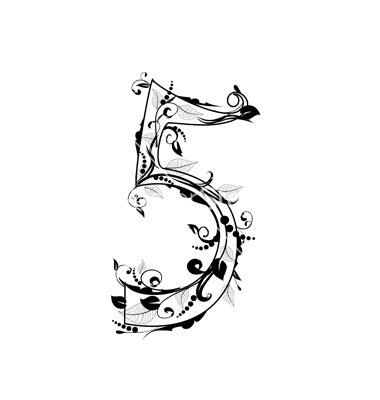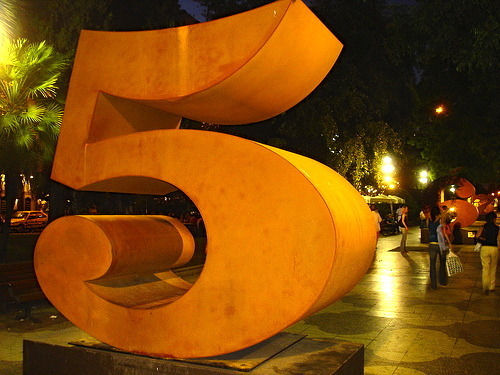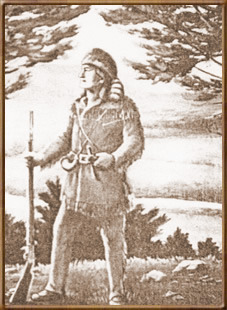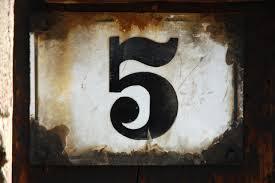Josh Kilmer-Purcell's Blog, page 65
September 29, 2013
Hear, hear
Those who’ve been to our flagship Beekman 1802 Mercantile in Sharon Springs, NY, know that we pay attention to every detail. This includes what we call the aural decor. We create a new music mix four times a year corresponding to the change in the seasons.
It’s a very important task as it sets the entire “tone” for the customer experience. We always turn to our music dilettante, Angela Rae Berg, to clue us into the coolest new sounds.
Here’s a selection of what you’ll hear when you step in the Mercantile this autumn. We guarantee you’ll leave the Mercantile a little hipper than when you entered.
Shake by The Head and the Heart
The Ceiling by The Wild Feathers
Alabama Pines by Jason Isbell and The 400 Unit
1957 by Milo Greene
Royals by Lorde
Living Proof by Gregory Alan Isakov
San Solomon by Balmorhea
Beautiful Day by Marie and the redCat
Never Wanted Your Love by She & Him
Pompeii by Bastille
Unbelievers by Vampire Weekend
Another Love by Tom Odell
Heart Beats by Hey Marseilles
The Walk by Mayor Hawthorne
Dust to Dust by The Civil Wars
Same Love by Macklemore and Ryan Lewis
Nicest Things by Kate Nash
Lightning Bolt by Jake Bugg
September 26, 2013
Five Beautiful Things
Ample Make This Bed
With the days getting shorter now and the temperatures steadily dropping, there is an increased urge to curl up in bed with a good book and a hot cup of tea. Humans spend over 30% of their lives with their eyes closed, sleeping and dreaming and restoring. Sleep is necessary for survival and beneficial to our health (physical and mental) in so many ways. Since we spend so much of our lives in bed, we may as well invest in a great mattress, beautiful sheets and comforters, perfect pillows and a good, solid bed frame.
I can still remember the best night of sleep I ever had. It was about 15 years ago, during the winter at my grandmother’s house in her spare room, which was lined with a dark grey, textured wallpaper. The room had a small window that looked out on to the backyard with heavy drapes that you close to keep out any intrusive light. The star of the room, though, was a beautiful big wooden bed with crisp white sheets and the perfect assortment of layered comforters: a thin wool blanket under a warmer duvet over a cooler top-sheet. There were four pillows (two firm and two soft) all with freshly laundered pillowcases. I remember waking up in the morning feeling like I had been completely renewed. My grandmother knew how to make up a bed.
Below are five beds that I would gladly spend 30% of my life in! I hope you find them as enticing as I do. To close, I wanted to share a poem by one of my favorite American poets, Emily Dickinson. It’s called Ample Make This Bed.
Ample make this bed.
Make this bed with awe;
In it wait till judgment break
Excellent and fair.
Be its mattress straight,
Be its pillow round;
Let no sunrise’ yellow noise
Interrupt this ground.
Do you have a secret for getting a good night’s sleep? Share it with everyone in the comments section below!
September 24, 2013
2013 Harvest Fest through YOUR eyes….
Usually, after every festival, we post our own photo recap of the event. But for this year’s Harvest Festival we asked for you all to submit your blog and photos. We tried to include all the photos you pasted to our Facebook page, but please forgive us if we couldn’t get all of them to download, upload, or reload. But thank you for letting us freeload your mother lode of great photos! Before we get to the shots, here are some awesome blogs and personal photo galleries about 2013′s Sharon Springs Harvest Festival:
Ken Newman’s Harvest Festival Photos
Sprout and Blossom Wellness Blog
If we missed your blog or photo gallery…please post a link in the comment section below. We’d all love to see!

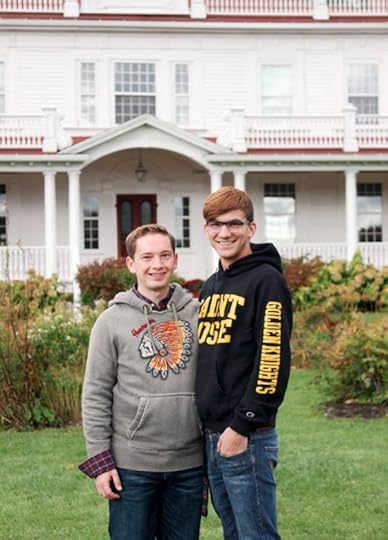

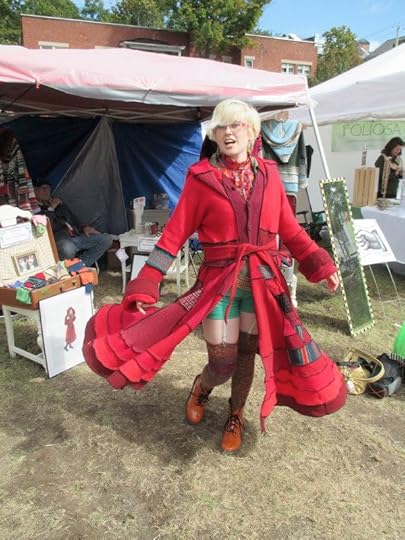
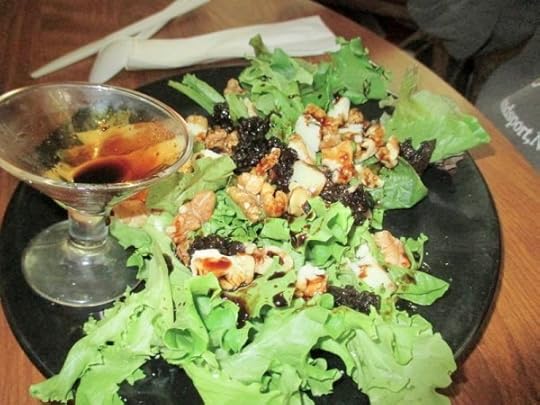

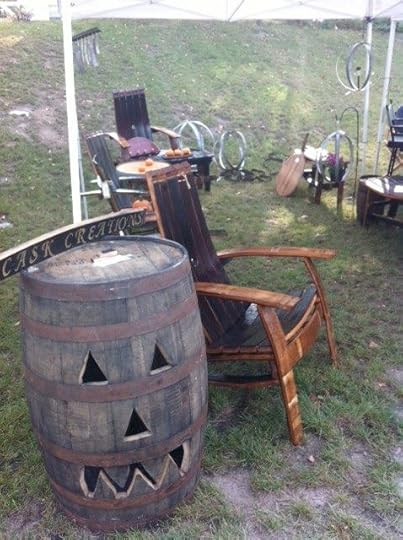


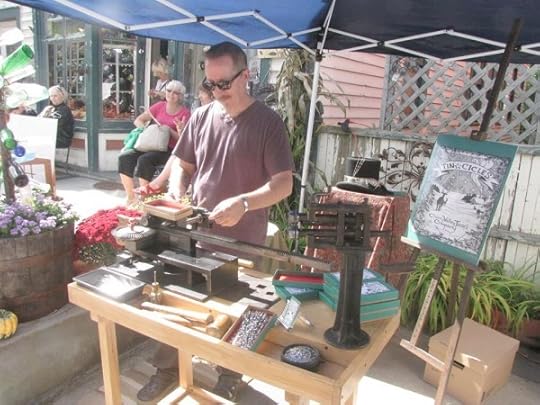



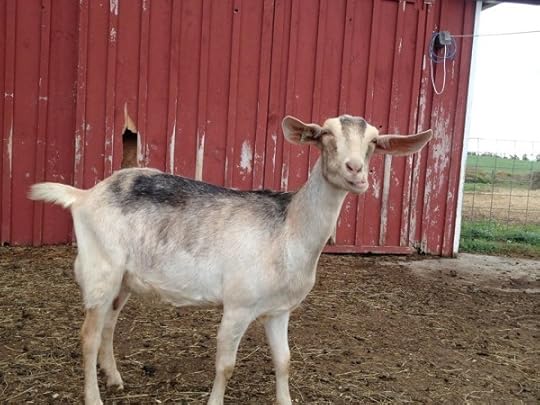








<
>
A New Perk at Beekman 1802
We draw inspiration for new products at the Beekman 1802 Mercantile from all over. The owners of Java Love Roasters are city transplants who are pursuing their passion in upstate NY (this story sounded familiar). And after tasting their hand-roasted, free-trade coffee, we asked if they would like to develop a Beekman 1802 Signature coffee blend.
When developing the coffee, we wanted to use the same type of beans that would have been available to William Beekman—the kind he would have sold in the original Beekman Mercantile.
The concept for the Beekman 1802 Mokha Java Blend stems from the first coffee “blend” ever created. The Dutch were the first to begin commercial cultivation of coffee trees on Java (part of the Dutch East Indies) in the 17th century. This Java (from the Indonesian phrase Kopi Jawa) was strong, black and very sweet. The Mokha side of the equation comes from the name of a major Yemen port used by the Dutch during the 17th century – the port of al-Mukha (Mokha, Mocca, Moka, Mocha); and the coffees coming from this port were traditional Arabian beans – fruity with a lively acidity.
The Mokha brings the earthy, fruity, brightness and the Java brings the contrasting full-bodied, mellow, and spice notes to the blend. Thus, a roughly equal blend of these two beans yields a smooth-drinking coffee with brightness and complexity of taste.
We invited a group of people to the roastery to help choose the final blend in a process called “the cupping”. Similar to a wine tasting, you are testing for the bouquet and the mouth taste of the blend.
Cupping Process—Why Do We Cup Coffee?:
Great coffee is about the combination of many factors including color, flavor and aroma. Coffee “cupping” is a lot like the wine tasting – it’s simply taking time to analyze the coffee. It is also used by importers, growers, roasters and many people in the coffee industry to determine crop quality and characteristics, and grading of the green coffee beans.
One of the first things you’re looking for are the two basic elements for evaluating coffee: acidity and body (you can also sense sweetness and finish).
Acidity is about how bright and lively the coffee tastes – basically your first impression.
Body refers to the fullness or richness of a coffee. It is the secondary impression, often called the “finish.” A heavy-bodied coffee will taste full, thick and syrupy, even “chewy” on the tongue, and the impression will be lasting.
These two elements are combined to describe the coffee. The first evaluation is usually “light,” “medium” and “heavy.” This is why you often hear coffee referred to as “heavy bodied, with medium acidity,” “light bodied, with good acidity,” etc.
Cupping also helps you learn how to describe coffees – taste and aroma descriptors to help you describe the tastes and aromas you experience. Does the coffee taste sweet, tangy or mild? Do you taste small hints of chocolate, vanilla, smoke, or cinnamon? The possibilities are endless.





<
>
Whether up early to do farm chores or get the Mercantile ready for business, a good cup of coffee is important fuel for the day. Watch out Starbucks!
September 20, 2013
5 Beautiful Things
Gaynor Ostinelli and Paul Priest have achieved something quite unique in the realm of the ceramic arts: a collaborative partnership resulting in whimsical, large-scale sculptures that depict the animal and human worlds through expressive shape and movement that is almost sketch-like in its spontaneity. The UK artists work independently as successful potters but when they mix minds (and media) the resulting artwork is striking. A melange of homemade glazes is poured over folded and twisted sheets of clay that have formed the shape of a dancing horse, a wayward hare on the back of a dog or a disinterested cow. Below are five beautiful examples of their work. Click here to see more from their collection.
September 16, 2013
Roasted Tomato Bloody Mary
Warren Bobrow, the mastermind behind our Soused Gnome column has come out with an essential cocktail book
From Apothecary Cocktails, Restorative Drinks from Yesterday and Today by Warren Bobrow
He’s provided us with an excerpt and you can add this book to your pantry shelves!
Roasted Tomato and Chili Bloody Mary
One of the best things about summertime is its abundance of fresh fruit and vegetables: Gardens and farmers’ markets overflow with juicy melons, succulent strawberries, delicate lettuces, and firm, deep-red tomatoes. It’s the perfect time to cool down with this spicy twist on the classic Bloody Mary, which puts those magnificent tomatoes to good use by popping them into the oven. (Trust me, the rich flavor of roasted tomatoes really makes it worth turning on the oven, even in sizzling heat.) Tomatoes are chock full of disease-fighting antioxidants, and lemon juice packs a healthy wallop of vitamin C, while celery seeds are said to possess anti-inflammatory properties. Plus, this spunky version of the Bloody Mary is just as delicious sans the vodka.
Ingredients
6 ounces (175 ml) good quality vodka (like Purity)
6 ounces (175 ml) roasted tomato puree (click here for instructions)
3 ounces (90 ml) freshly squeezed and strained lemon juice
2 tablespoons (30 ml) hot chili sauce (a sweet-and spicy one works best, such as Vietnamese Sriracha)
Ice cubes
Dash of celery salt
Instructions
Combine all the ingredients except the celery salt in a large glass, and mix gently (with a celery stick, perhaps?). Just before serving, sprinkle the celery salt over the top of the drink. Garnish with a lemon wedge. Find a spot in the shade, sip slowly, and cool down from the inside out. Serves 2.
Need more inspiration? Click here
Roasted Tomatoes
Klaus is just going crazy over the tomatoes this year. And like every year, he grows more tomatoes than he can possibly use on salads, with freshly pulled mozzarella cheese and with BLT’s. I wouldn’t go far enough to say that he is tired of tomatoes, but his little ceramic stomach is showing a bit of stretching. But what should you do with all those juicy tomatoes? Roast them of course. But isn’t roasting just like cooking except for the use of a higher temperature? Perhaps yes, but roasting the tomatoes is not the only thing that Klaus has up his little ceramic sleeve. Klaus has Vietnam on his little ceramic mind. In fact, Klaus has a fifth of really lovely vodka from Purity in Sweden in his little ceramic hand. Ah Klaus, how did you find out about Purity Vodka? It seems that he found out because he was rooting around in the liquor cabinet the other day and his little ceramic eyes spotted a bottle that looked like a cut crystal. But as Klaus knows, there is more to liquor than just the look of the bottle.
(Or the label for that matter.)
Purity Vodka is one of Klaus’s favorite brands of vodka. Klaus is traditionally not known for his love of that spirit known as vodka, but Purity is different than the plethora of flavored vodkas that spoil the view at the liquor store. It is just fantastic when mixed with anything that says roasted tomato and also with chili sauce.
Klaus was seen over at the nearby Vietnamese restaurant in Florham Park, NJ recently. It’s named Viet Ai. One of the dishes that get Klaus’s attention and the satisfaction of his stomach is made with crispy beef; soused with sweetly caramelized garlic chips, hot chili pepper flakes and charming, yet zesty onion slices.
This dish is remarkable in flavor and perks up even more with the Sriracha chili sauce that comes in the clear bottle sitting on every table. Klaus, in his own language started demanding that we roast some of the tomatoes that were piled up in the basket by the door. Roast them? Absolutely we will.
Here is how Klaus roasts tomatoes for his Bloody Mary with Sriracha Chili Sauce.
Slice tomatoes in half- you will need about 5 pounds of garden ripe tomatoes roasted and then roughly pulped in a mortar and pestle to make this drink.
Pre-heat your oven to 400 degrees
Sprinkle halved tomatoes with sea salt
Put a piece of parchment paper on a cookie sheet
Scatter some good olive oil on the parchment paper
Place the halved tomatoes on the sheet of parchment paper
Roast for 15 minutes at 400 degrees then drop heat down to 275 for an hour or more until melted
Click here and follow the directions to make a most lovely Roasted Tomato and Sriracha Chili Bloody Mary Cocktail!
September 13, 2013
Are You a Tim Murphy?
Timothy Murphy, Rifleman
American history has its share of frontier culture heroes. Daniel Boone is known for a variety of exploits in the Cumberland Gap region of Tennessee and Kentucky during the late 18th and early 19th centuries, as is Davy Crocket from Tennessee to Texas in the early 19th century. Old West explorers such as Lewis and Clark, mountain men and guides such as Kit Carson, lawmen such as Wyatt Earp, and even outlaws such as Billy the Kid, are also familiar names to us. Native Americans such as Sitting Bull and Crazy Horse have legendary status. But a name not so widely known is that of Timothy Murphy. A famous sharpshooter of the Revolutionary War, his fame endured through the 19th century. Murphy also achieved some popular culture status in the 1950s-60s through John Brick’s novels. Perhaps a successful movie or TV show about him would have kept his name widespread to the present day, as Disney’s 1954-55 miniseries Davy Crockett did for that historical figure. In any case, Murphy is still celebrated in Schoharie County, known to many there as “The Rifleman” – the name of Brick’s 1953 novel about him – or as “Sure Shot Tim.”
Timothy Murphy, the son of Irish immigrants, was born in 1751 near the Delaware Water Gap, an area where the Delaware River cuts through a ridge of the Appalachian Mountains between New Jersey and Pennsylvania. When Timothy was about eight years old, his parents moved farther west, settling in Shamokin Flats (present Sunbury, Pennsylvania) along what was then the western frontier. At some point in the next years, he was placed in service to the Van Campen family, moving northeast with them to the Wyoming Valley of the Susquehanna River (near present Wyoming, Pennsylvania). Timothy developed frontier skills, becoming an expert marksman.
On June 29, 1775, two months after the start of the Revolutionary War, Timothy and his brother John enlisted in the Northumberland County Riflemen. Under Captain John Lowdon, the infantry unit saw action at the Siege of Boston, the Battle of Long Island, and the Battle of White Plains.
Timothy later became a sergeant in the 12th Regiment of the Pennsylvania Line and fought at Trenton, Princeton, and New Brunswick in New Jersey. Given his great skill as a marksman, he was recruited for Morgan’s Rifles, also known as the Sharpshooter Corps, an infantry unit headed by General Daniel Morgan.
In August 1777, Morgan and his best 500 riflemen, among them Murphy, were sent to upstate New York to resist a British force under General John Burgoyne. On October 7, 1777, at the Battle of Bemis Heights (the Second Battle of Saratoga), legend has it that Murphy, positioned in a tree, shot and killed Brigadier General Simon Fraser at a distance of 300 yards, as well British Senior Officer Sir Francis Clerke, Burgoyne’s chief aide-de-camp. Their deaths shook the morale of British forces who were driven back.
Morgan’s Rifles soon traveled to Valley Forge, joining General George Washington’s force and suffering through the winter months. In June 1778, they helped in the pursuit of a British force evacuating Philadelphia. The next month, Washington then dispatched the unit to the Schoharie Valley of upstate New York to help counter Tory and Indian raids (see our earlier blog “Revolutionary” about the Schoharie Valley being the “breadbasket of the American Revolution”). They manned the forts along the valley, carrying out long-range patrols in the region. In the summer of 1779, Murphy was part of the Sullivan-Clinton Campaign against the Iroquois.
Murphy’s term of enlistment in the Continental Army expired in late 1779. He soon joined Captain Jacob Hager’s Company of Colonel Peter Vrooman’s 15th Regiment of the Albany County Militia and continued to participate in patrols throughout upstate New York, including parts of present-day Schoharie, Otsego, Delaware, and Greene Counties. Murphy’s skill as a long-distance sniper was reportedly feared by Loyalists and their Native allies.
In October 1780, a Loyalist force under John Johnson, including Joseph Brant’s Volunteers, mounted a series of attacks on settlements along the Schoharie Valley. Murphy and about 200 other militiamen defended Middle Fort (north of present Middleburgh). The regular army commanding officer, Major Melanchthon Woolsey, made the decision to surrender the fort, but Murphy refused to do so, firing shots over the heads of Johnson’s truce party and driving them back. Johnson’s entire force soon withdrew, harassed by Murphy and other militiamen while retreating to Canada.
Early in 1781, Murphy reenlisted in the Pennsylvania Line and that fall served under General “Mad” Anthony Wayne at the decisive Siege of Yorktown.
After the war, Murphy returned to the Schoharie Valley settling in the hamlet of Fultonham southwest of Middleburgh. He never applied for a veteran’s pension or a grant as many of his peers did, but he became a successful farmer and ran a grist mill. Although Murphy reportedly did not know how to read or write, he became involved in local politics. By his first wife Peggy Pleck, he had five sons and four daughters. After marrying Mary Robertson, who gave him four more sons, he moved out of the Schoharie Valley for a time. But he returned to Fultonham to live out his years, dying there in 1818 at age 67. He was buried next to his first wife.
It became an accepted fact among 19th-century historians that Timothy fired the shots at Saratoga that killed Fraser and Clerke. As a result, his name appears in modern books on the history of snipers. Yet the first documented account of his deeds at Saratoga did not appear until 1845 and Jeptha R. Simms’ History of Schoharie County and Border Wars of New York. So it is not known for certain whether Murphy’s marksmanship that helped turn the tide of the battle is indeed fact or whether it’s battlefield lore, leading to a writer’s assumption decades later. Murphy was also famous for having one of the first double-barreled rifles, designed by John Golcher of Eaton, Pennsylvania, although it cannot be known for certain when he first acquired one during or after the war. Yet, based on reports by his friend Aaron Wright in his diary – with entries from June 1775 to March 1776 – and Murphy’s service in the elite unit Morgan’s Rifles, there is no doubt that Timothy Murphy was one the Revolutionary War’s most skilled sharpshooters. And his story is remarkable in that he went from being a youth raised humbly on the western frontier to an acclaimed soldier who saw action in so many of the war’s critical battles. Regarding the defense of the Schoharie Valley’s Middle Fort, the fact of Murphy’s rebellious stand is considered indisputable, based on the number of witnesses who passed the story down.
In 1819, the year after Murphy’s death, the New York State legislature voted to erect a monument to him, although the decision was not carried out. In 1872, his remains were reinterred in Middleburgh, and, in 1910, some of his descendants commissioned the sculptor Evelyn Beatrice Longman to create a bronze bas-relief plaque, placing it on their ancestor’s grave at the Upper Middleburgh Cemetery. In 1913, the Ancient Order of Hibernians dedicated a marker to Murphy at the Saratoga Battlefield. In 1929, the state also commemorated Murphy with a marker. At the dedication, then-Governor Franklin Delano Roosevelt eloquently stated:
“This country has been made by Timothy Murphys, the men in the ranks. Conditions here called for the qualities of the heart and head that Tim Murphy had in abundance. Our histories should tell us more of the men in the ranks, for it was to them, more than to the generals, that we were indebted for our military victories.”
The names of political, business, and military leaders from upstate New York’s rich history are known to many. Timothy Murphy is one of the common folk whose name also endures.
The History Boys are
Chris Campbell has made his permanent home in Cherry Valley, NY. The Campbell family dates back to 1739 in this town, situated about eight miles from Sharon Springs. Some family members were captured by Tories and Iroquois allies in the Cherry Valley Massacre of 1778 during the American Revolution and taken to Canada, released two years later in Albany as part of a prisoner exchange. Chris is a rare book and map collector and has had a lifelong interest in history, especially relating to upstate New York and colonial land patents. He was the founder and first chairman of the Cherry Valley Planning Board and has worked as a surveyor and realtor as well as a researcher for the Otsego County map department. His hobbies include Ham radio.
Carl Waldman, also living in Cherry Valley, is a former archivist for the New York State Historical Association in Cooperstown. He is he author of a number of reference books published by Facts On File, including Atlas of the North American Indian and Encyclopedia of Native American Tribes, both originally published in the 1980s and both in their third editions. He is the co-author of Encyclopedia of Exploration (2005) and Encyclopedia of European Peoples (2006). Carl has also done screenwriting about Native Americans, including an episode of Miami Vice entitled “Indian Wars” and the Legend of Two-Path, a drama about the Native American side of Raleigh’s Lost Colony, shown at Festival Park on Roanoke Island in North Carolina. His hobbies include music and he works with young people in the Performance and Production Workshops at the Cherry Valley Old School.
Carl has recently published an ebook through Alva Press, Streetscape: A Jake Soho Mystery
In the comments section below, tell us about a Tim Murphy that you know!
Heirloom Charlie

At Beekman 1802, we are always inspired by the artisans we work with to create our products, but we also get inspired by people we meet “along the way”. We met artist Liz Carren at an event earlier this year and were inspired by her “starting life over” story. She’ll be one of the 150 vendors at this year’s Sharon Springs Harvest Festival. Find her booth and say ‘hi’.
From Liz:
Heirloom Charlie
Meet Heirloom Charlie, Our First Vegetable Beauty! Charlie is a sustainable farmer, no GMOs and organic are his “methods.” He pays homage to ALL farmers who honor Heirlooms (seeds, product and produce) and to The Fabulous Beekman Boys. Their concept of Heirloom Living is to be admired. Their pay it forward action displayed with their “Mortgage Lifter Heirloom Tomato Pasta Sauce” is such a great idea that I was inspired to create Heirloom Charlie. Sustainable farming, food, hard work and team efforts equal a life long result! This dovetails into the Botanical Beauties & Beasties mantra of Live Kind, Live Green,Live Creatively.
Heirloom Charlie’s story. A great thing happened at a garden symposium in VT. Botanical Beauties & Beasties was there as a vendor, and the Beekman Boys were there as a the final hurrah–wonderful speakers. I had just learned about thier pasta sauce and the whole story of “Mortgage Lifter” heirloom tomatoes. The pasta story is as follows – direct from the source of Beekman1802.com.
“…in 1920 a man named Marshall Cletis Byles owned an auto repair garage in Logan, West Virginia. When his business began suffering during the Great Depression, Marshall (who went by the nickname “Radiator Charlie,”) decided to earn extra money by selling the best tasting tomato variety he could breed. It took a few years, but Charlie finally bred his perfect tomato. He advertised that one single plant, with its 1-2 lb fruits, could feed a family of six. And he wound up selling enough seedlings in four years to pay off his mortgage. In full. Hence “Radiator Charlie’s Mortgage Lifter Tomato” was born.”
The Beekman farm had a field of tomatoes they had planned to use as pasta sauce to help pay their mortgage. Then they won The Amazing Race and they paid off thier mortage.
“Then it hit us. We’ll use these tomatoes pay off another small farm’s mortgage! Pay it forward. So we went ahead and kept developing the pasta sauce. We used the best tomatoes from our farm and other farms, fresh garlic and spices, and other summer vegetables. And we went ahead and stuck with the name: “Mortgage Lifter Heirloom Tomato Pasta Sauce.”
I was lucky and had the opportunity to meet Brent and Josh at the garden event. Having known I wanted to create an organic farmer, when I heard their talk it suddenly became crystal clear. His name had to be Radiator Charlie, it sounds so fun and it represents all I wanted it to!
I will donate 15% of every piece with an image of Heirloom (Radiator) Charlie to aid local sustainable farming as represented by Long Life Farm in MA. Long Life Farm is an organic small CSA farm that is striving to go beyond organic to grow more nutritious, nutrient dense vegetables, thereby giving people the minerals they need to fight disease. They also happen to grow Mortgage Buster tomatoes! Why them? Well because: they offer two shares at 50% off to two low income families for the season, they donate to three local food pantries, and Laura Davis, one of the owners and farmers, is on the Board of the Northeast Organic Farming Association a 501c-3. They are running a new program called CSA Connect, which aims to connect more urban and low income families with CSAs and their fresh produce. You can look them up at: http://www.nofamass.org/ and http://www.longlifefarm.com/
I hope you enjoy Heirloom Charlie (aka Radiator Charlie)-his beet tattoo and his dill hair are two of my favorite details!
September 12, 2013
5 Beautiful Things
Cover to Cover
Those who know me, know that I am a person who loves a book with great content: tales, photographs, instructions or histories. If the content is engaging or informative, I am satisfied. But my guilty pleasure is a really amazing book cover. Call me superficial, but I often do judge books by their covers and I’ve been known to buy a book simply because the cover is so spectacular. The best examples of exceptional cover art are often found at flea markets and used book stores. Many older books have covers that are beautifully illustrated, embossed or embroidered and, frequently, the designs are irresistibly whimsical or campy. It may sound trite, but they rarely do make them like they used to. I’ve selected five book covers that I wish were in my collection. (If you see any of these, let me know immediately!) Is there a book cover that you find particularly enchanting?


